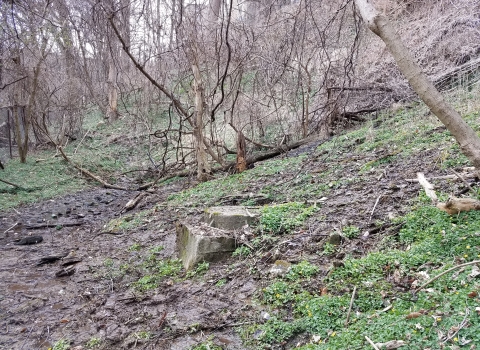The U.S. Fish and Wildlife Service has approved a recovery plan for the Hay’s spring amphipod, a groundwater-dwelling crustacean endemic to the Lower Rock Creek watershed in Washington, D.C.
The recovery plan is a non-regulatory document that outlines objective, measurable criteria for removing the Hay’s spring amphipod from the federal endangered species list, and site-specific actions managers can take to advance recovery.
The finalization of the plan is a milestone for the elusive species. When the Hay’s spring amphipod was listed in 1982, it was known from just a single site at the south end of the National Zoological Park in D.C. where it was last seen in 1978. Options for managing the tiny, groundwater-dwelling crustacean were so limited that the Service determined a recovery plan would not benefit the species at the time.
Now thanks to collaboration with partners and advances in technology, biologists have found the Hay’s spring amphipod at six additional sites in nearby Rock Creek Park and have identified measures that benefit the species by addressing the greatest threat to its shallow groundwater habitat: stormwater runoff from impervious surfaces.
The Hay’s spring amphipod occurs entirely on federal lands managed by the National Park Service and the Smithsonian Institution, and the Service has proactively worked with these agencies and the D.C. Department of Energy and Environment to improve stormwater management within the species’ range. The partners recently collaborated on an effort to retrofit an 11‐acre area of impervious surface around the Fitzgerald Tennis Center in Rock Creek Park with nature-based bioretention structures that allow stormwater to infiltrate the soil, reducing runoff and associated erosion.
Like other amphipods, the Hay’s spring amphipod plays a nutrient-cycling role by breaking down leaves and organic matter in shallow, groundwater ecosystems where few other species can survive. Because of its sensitivity to runoff, it may be a good indicator of water quality, meaning actions to benefit its habitat support others that rely on clean water – including us.
The species remains vulnerable to stressors outside the boundaries of the park. The Lower Rock Creek watershed is highly developed, with 40 percent impervious surface, and declines in water quantity and quality may have led to extirpation of Hay’s spring amphipod from some sites and decreased its fitness at others. Climate change could lead to more frequent storm events, potentially increasing the magnitude and severity of threats to the species by impacting water quality and water quantity.
However, impervious surface is unlikely to increase in the watershed, and new sites may still be discovered at Rock Creek Park by sampling for environmental DNA (eDNA). The Service' is using this process to supplement traditional surveys for the amphipods, which rarely appear on the surface. With water samples collected from springs in the park, scientists at the Northeast Fishery Center can look for genetic markers for the amphipod in water samples collected from the park, a powerful tool for finding organisms that are cryptic, rare, or difficult to capture.
The final recovery plan is available here: https://www.fws.gov/species/hays-spring-amphipod-stygobromus-hayi
America’s fish, wildlife, and plant resources belong to all of us, and ensuring the health of imperiled species is a shared responsibility. We’re working to actively engage conservation partners and the public in the search for improved and innovative ways to conserve and recover imperiled species.



